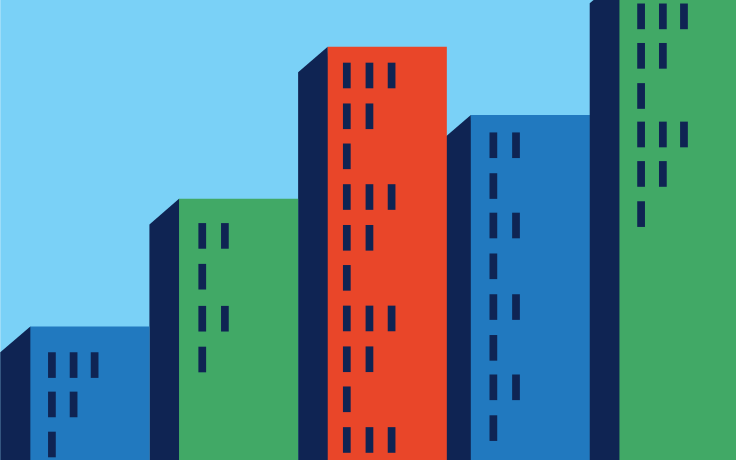Tonight in Los Angeles County, an estimated 75,000 people will not have a place to sleep. Some will find shelter, but more than 70% will not. They will find protection beneath tarps and freeways. They may congregate in encampments or alcoves, in cars or alleys; some will spend the cold night alone and afraid.
Together, they represent a midsize city of unhoused humans, and they are at risk of violence and food insecurity, illness and predation. They are guilty only of being poor, and they are suffering for that crime.
What might change their lot? What services would bring them warmth and security, return them to well-being?
To better understand the health and needs of this vast unsheltered population, Randall Kuhn, a demographer and sociologist at UCLA’s Fielding School of Public Health, tried something new: He tried asking.
In 2022, Kuhn co-launched the Periodic Assessment of Trajectories of Housing, Homelessness, and Health (PATHS) with a colleague, Benjamin Henwood, from USC’s Suzanne Dwora-Peck School of Social Work. PATHS works by quantitatively measuring the experiences and well-being of people experiencing homelessness through a monthly digital survey. Kuhn is involved because he believes that, for effective social policy, longitudinal research is vital — only it can adequately grasp the enormity of the challenge and gauge what works best, over time, to address it.
His work may give policymakers and others a fuller picture of who lacks housing, what the needs of those unhoused people are and what policies and programs may bring lasting change. Homelessness is a profoundly human crisis, but it may be data that charts the way out of it.
A new idea: Ask
While earning his PD.D. from the University of Pennsylvania, Kuhn met Dennis Culhane, who introduced him to measuring the trajectory of someone’s experience of homelessness through quantitative means. Culhane’s research has focused on using administrative databases of homeless shelter entries and exits to look for patterns of vulnerable populations in long-term homelessness.
That entry-and-exit data was useful but limited. As Kuhn and others recognized, just over a quarter of people experiencing homelessness are those in shelter, and Kuhn highlighted that shelter-based data often fail to capture the experiences of the most vulnerable populations. So he connected with Henwood to launch PATHS. At its core, PATHS is a questionnaire.
Kuhn and Henwood determined that at any given moment, 80% to 90% of people experiencing homelessness have access to a cellphone. That meant a communication opportunity, and the researchers created an SMS outreach system for enrolling and staying in contact with participants. Those experiencing homelessness were asked to participate in a monthly digital survey and offered a $10 gift card for each month they responded.
The survey is pushed out to participants on the third Monday of each month. It has a median completion time of 17 minutes. The questions on the survey are updated regularly as new issues emerge in the unhoused population, or as new studies suggest new lines of inquiry. Upon completion of a survey, participants can register to receive an electronic gift card from a range of vendors to best suit their needs.
PATHS invested time in designing a survey that wouldn’t feel like a burden to its participants. Many people in the homeless population have trauma or cognitive impairments that may make completing a voluntary survey difficult.
As a result, questions are deliberately designed to be simple and clear.
To take just one example, a recent survey sought information regarding the response of unhoused people to the cleanups of encampments that are at the center of L.A.’s attempts to combat homelessness.
Although the county has made efforts toward “friendly sweeps,” or sweeps led by outreach workers rather than law enforcement, more than 53% of respondents were informed of their imminent sweep by a police officer.
Only 13% of respondents were offered shelter during a sweep, and just 5% said they had received housing that lasted more than a month. “Sweeps are there to just move people along and give them tickets, not to house them,” Kuhn said. “This level of police involvement is not going to be conducive to getting people into housing.”
Despite city initiatives like Inside Safe, which intends to move people off the streets and into housing, PATHS results demonstrate that the track to housing isn’t being shown to those experiencing homelessness.
This study also looked at housing status as it related to healthcare access. PATHS found that when they were in permanent housing, respondents reported 25% to 60% increased access to healthcare services. They also found that respondents staying in agency-run hotels were 50% less likely to visit an emergency room or miss doctor appointments. Those are encouraging findings, suggesting that placing people in housing does more than just take them off the streets; it also gives them a chance to regain their health.
The findings were less rosy, however, when it came to securing long-term housing.
PATHS looked at the housing status and trajectory of respondents over a six-month period. During this period, only 7% of respondents were ever housed. Twenty-two percent of respondents doubled up — stayed with a friend or family member — at some point during this period, but more than half of those who were doubled up fell back into homelessness. Twenty-four percent of respondents were given shelter at some point, but only 14% were able to stay sheltered during this period. “It’s really a revolving door. As long as shelters feel insecure, dangerous, unclean and not really a path to permanent housing, people are going to circulate back onto the streets,” Kuhn said. Nearly half of all respondents were unsheltered during the entire six months, evidence that great numbers of unhoused people remain outside of city efforts.
A hopeful result from this study lies in hotel-based transitional housing programs. Respondents who lived in hotel-based programs saw increased levels of certain healthcare access measures similar to those in permanent housing. Kuhn cautioned that it was too early to gauge the success of hotel programs because sample sizes are still small, but he hopes to have fuller results in the coming months.
PATHS will continue to obtain data from respondents regarding sweeps, camping laws, and the impacts on healthcare and housing. It’s seeking government data on the location and timing of sweeps and camping enforcement zones.
“Brojans” respond
This work requires many hands. It brings together professors, researchers, students and volunteers, driven by a desire to confront some of society’s most vexing social problems and, in some cases, to remedy inequities.
Norma Guzman Hernandez, a first-year master’s in public health student at UCLA, said that part of the reason she became involved was because she was frustrated that unhoused Latino/ as who were in the country illegally were unable to apply for government assistance programs.
She witnessed the effects of that rule when she participated as a surveyor in the L.A. Homeless Count, and she considered it both discriminatory and unhelpful. “I felt something in me to continue to do this work,” Guzman Hernandez said.
One result is that she sees it as part of her job to build trust between PATHS and its participants. “We have to reassure them,” she said, “that PATHS is here to help.”
That determination is evident in the work being conducted on the ground. The team of Bruins and Trojans, or “Brojans” as they sometimes call themselves, is currently conducting a PATHS study of street medicine and its impact on health outcomes.
Street medicine consists of offering medical and social services to the unhoused directly where they live while alleviating healthcare barriers. This healthcare model aims to bypass obstacles such as insurance, creating appointments or leaving one’s personal belongings unattended. The study will feature survey results about healthcare models and the effectiveness of street medicine among L.A.’s unhoused population.
“The idea of giving people healthcare on the streets sounds nice,” Kuhn said, “but it takes a lot to get them connected — to go from providing wound care on the street to getting them connected to healthcare systems.”
Irene Del Mastro, a member of the team and Ph.D. candidate in sociology at UCLA, said she and other participants “meet people where they are — both literally and figuratively.” Before joining PATHS, Del Mastro shadowed street medicine providers for more than a year. She has drawn from the experience to design questions for the survey seeking data to help assess the efficacy of these medical efforts.
Del Mastro recognized a few structural obstacles that hinder street medicine from operating at its full potential, the first being displacement. Arrests and sweeps make it difficult for street medicine providers to relocate their patients. If a patient’s phone or medication is gone after a sweep, “the patient is unfindable,” Del Mastro said. Additionally if the providers don’t have the support of their district’s homeless council, they won’t go there. “They need support in order to be able to offer their services,” Del Mastro said. She was referring not only to welcoming but also to financial support, logistical support and emergency shelter for patients in extreme circumstances.
Del Mastro also recognized a limitation specific to PATHS: its population sample. Not only is the team working with a population that is difficult to reach, but their results also may be skewed because their respondents are healthy enough to participate in a survey. “We’re missing,” she said, “the sickest population.”
If there is a theme to the data collected by PATHS thus far, it is that to be unhoused is to be vulnerable — that many people are at risk and that efforts to help them can only do so much.
The high price of housing means that many people are just a paycheck away from being unhoused. And once they are without housing, they become vulnerable to a host of health and human threats.
Street medicine is “healing a lot of people,” Del Mastro said, “preventing them from dying sometimes. But these individuals are still living on the streets.”
Only by understanding what they need and getting them inside, once and for all, can we help unhoused people regain a sense of safety and return to contributing to the society that has so often shunned them. That’s the goal of PATHS.






















